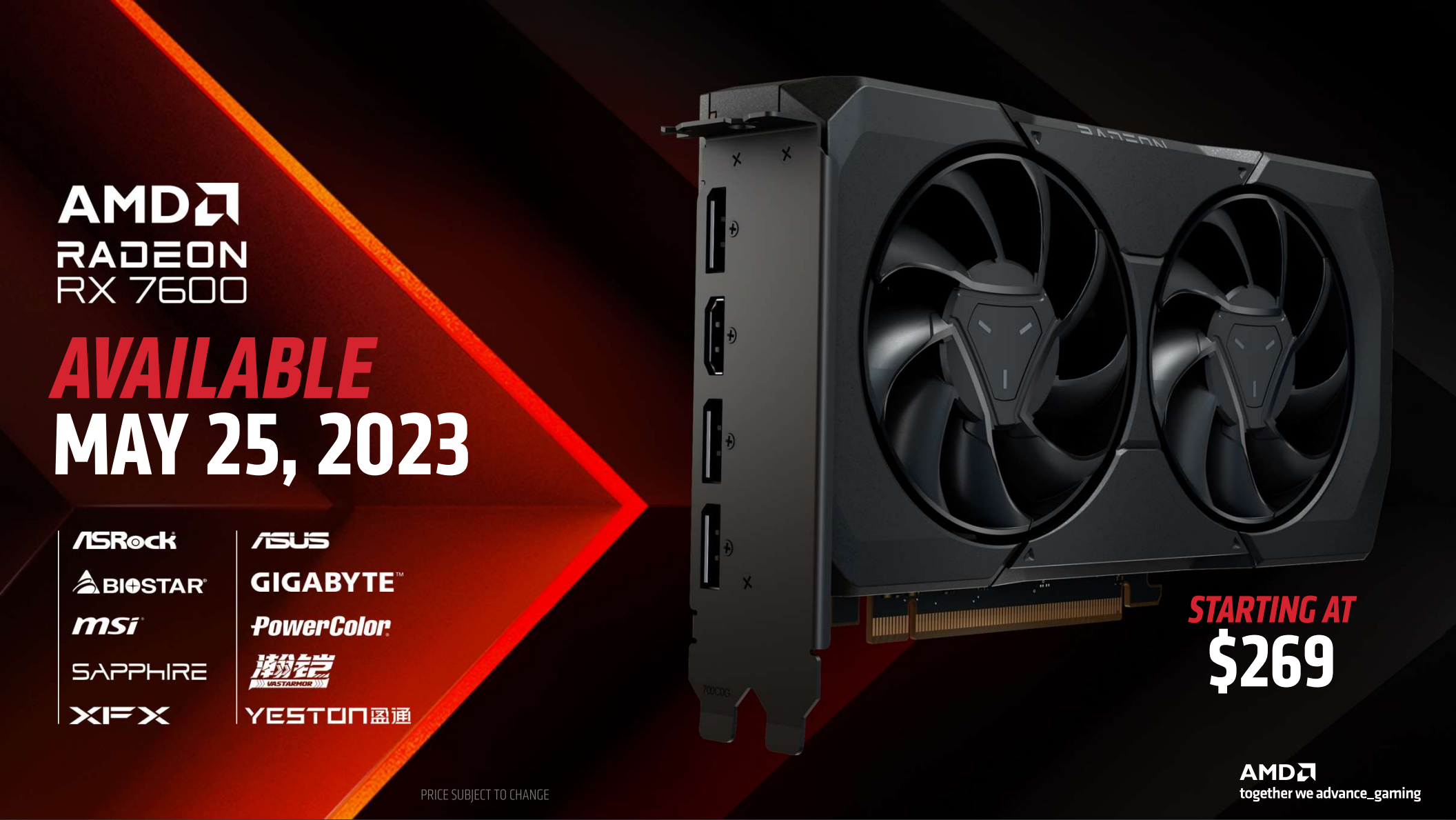AMD has done very little with the RX 7000 series since it launched in late 2022, and for over half a year the only desktop RX 7000 cards were the RX 7900 XTX and 7900 XT. But that finally changes today as AMD launches the third member of the RX 7000 family, the RX 7600. It's a $270 midrange GPU that stands to compete directly against the RTX 4060 and replace the RX 6650 XT, but not in a particularly aggressive way.
The 7600 doesn't really change AMD's product stack
You can see the specs for the new AMD Radeon RX 7600 below, next to the previous-generation 6000-series cards.
|
Radeon RX 7600 |
Radeon RX 6650 XT |
Radeon RX 6600 |
|
|---|---|---|---|
|
Compute Units |
32 |
32 |
28 |
|
Frequency (Game/Boost) |
2,225/2,660MHz |
2,410/2,635MHz |
2,044/2,491MHz |
|
VRAM |
8GB |
8GB |
8GB |
|
Memory Bus |
128-bit |
128-bit |
128-bit |
|
Memory Bandwidth |
288GB/s |
280GB/s |
224GB/s |
|
Bus Interface |
PCIe 4.0 x16 |
PCIe 4.0 x8 |
PCIe 4.0 x8 |
|
MSRP |
$270 |
$400 |
$330 |
Just based on the spec sheet, the 7600 kind of just looks like the 6650 XT with a lower MSRP, and that's seemingly corroborated by AMD itself. According to AMD's own benchmarks, the 7600 is 29% faster than the 6600, which is similar to the margin between the 6650 XT and the 6600. A $130 lower MSRP for the same performance is great in theory, but in practice the 6650 XT is actually going for $280 to $300, so it's hard to see how the 7600 is really going to change things in the short term.
It's also quite surprising how long it took AMD to finally launch the 7600, which uses the same silicon found in RX 7000S GPUs for laptops such as the RX 7600S and 7700S. In fact, the 7700S is almost identical to the 7600 except for clock speed, and the 7700S officially launched in January. Perhaps AMD simply didn't have enough GPUs to go around.
AMD isn't in a rush to fight Nvidia's RTX 40 series with RX 7000
Nvidia's upcoming RTX 4060 is $300 and will naturally be directly pitted against the 7600, and based on some napkin math it's likely the two GPUs will be very close in performance. The 7600 was originally priced at $300, and had AMD gone ahead with that price the 7600 probably wouldn't have been in an advantageous position as DLSS and likely superior ray tracing performance on the 4060 would be notable selling points. At $270, the 7600 still doesn't appear particularly competitive but it certainly makes things more even with the 4060.
Between the unaggressive pricing strategy with the 7600 and the extremely slow-paced release schedule of RX 7000 as a whole, it really seems like AMD would rather just sell more RX 6000 series cards at a steep discount. But that might not be a bad thing considering the 7000 series doesn't provide big improvements in efficiency or revolutionary new features (unless you count AV1 encoding), and for AMD it means bigger profits as the 6000 series is much cheaper to produce than the 7000 series.
The RX 7600 launches tomorrow on May 25. AMD is releasing its reference model with two fans, and several of AMD's partners will have their own custom models available.

